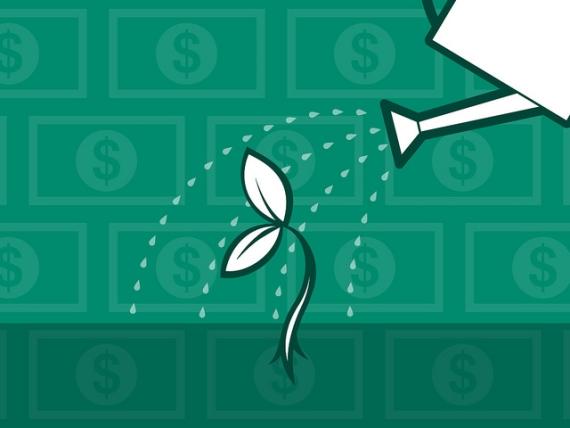How to Yield Big Returns by Investing In Land
Posted: September 17, 2016 by LandCentury

Most people invest in land under the assumption that theyll see a steady, long-term return. But if you know how to play your cards, you can see big returns. Theres more to land investing than just buying an attractive property and holding onto it.
Heres how to yield a big return by investing in land.
Commercial and Residential Development
Keep a close eye on local markets, or markets across the country if youre brave, and see where most of the development is taking place. Buying undeveloped land in these areas can offer a number of benefits. For one thing, the value of the property will rise as development continues. But you also have the benefit of potentially being approached by developers to purchase your property.
If you cant find any reasonably-priced properties in the heart of where the development is taking place, consider buying land in outlying areas. Developers will likely be looking to these areas next.
You also have the option of owning a piece of the development, which you can do without having to be a large company. Or, you can decide to subdivide your property into several developments and turn an even higher profit. The only catch here is that youll need to make sure that your property is utility-ready, meaning youll need to cover the cost of running electric, phone and cable lines to your land. In some cases, this may be a costly endeavor, but if you can find the right opportunity in the right location, this could be a lucrative option.
Timberland
Wooded properties can offer high returns, especially now that the housing market is picking back up. When demand for building materials is high, lumber companies will pay a premium for a steady wood supply. Consider buying timberland if youre looking to gain a higher return on your investment.
The great thing about timberland is that the trees grow back, providing a steady stream of income. And they require virtually no upkeep. Trees will continue growing and will continue being in demand whether the economy is in a slump or on the uptick.
Theres only one slight drawback to timberland investments: they take a while to see a big return. Unless you purchase property with trees that are nearly ready for harvest (which cost significantly more), it may be a few years before you see any income. Thats because timberland doesnt give you a return until the wood is harvested. At this point, youll receive a lump sum for the wood. After the harvest, it will be another couple of years before you receive more income.
Ranch Land
Right now, ranch land is a hot commodity, especially now that leasing land is a more attractive option. Both individual family farms and big agricultural companies are looking for prime ranch land. And when the economy is doing well, the demand for meat-related products soars, making this land even more valuable.
Leasing your property to ranchers can provide you with a steady stream of income. Just be sure to consider carefully whether you want to lease to an individual or a large corporation. An individual rancher will have more of a personal interest in the land and will be far more likely to take better care of the property.
You also have the option of leasing your property for grazing and hay production. And in areas like California and Texas where droughts are commonplace, farmers purchase hay and grass from outside sources to feed their livestock. If your property can supply grass and hay, you can generate some decent income. With that said, its best not to rely solely on hay and grazing as your success will be highly dependent on weather conditions.
Mineral Production
If your property is located in an area where gas and oil companies are looking for drilling opportunities, you can make a huge return on your investment. The current oil slump may not make this as attractive of an investment right now, but once the market rebalances, high returns will once again be the norm.
Be sure to do your due diligence if youre purchasing property for the purpose of mineral production. Landowners dont necessarily own 100% of the propertys mineral rights. You can check to see if any other individuals or entities own any portion of the mineral rights. Oftentimes, mineral rights can be split and still provide you with a tremendous return.
Remember, mineral leases are the focus of some of the most lucrative real estate deals.
Farmland
If you own a large piece of property, you may consider leasing it to farmers. Farmland is another hot investment right now, and prime land can fetch a high price. Why is farmland such a good investment? As the worlds population continues to rise, demand for food will rise with it. Land is a finite resource, and with so much development taking place across the world, farmland is shrinking.
Leases can provide you with steady income, or you can choose to farm the land yourself if you have the experience and know-how. You also have the option of selling the property outright to a farmer or big-ag company and see a big return.
There are numerous types of farmland, too, from vegetable crops to vineyards and orchards. Each has their own advantages, but orchards and vineyards require certain types of land to thrive (i.e. specific soil conditions and environments).
The right land investment can provide you with a steady stream of income and a large return. Selling a desirable property to a developer is a quick way to generate a high return, but other options, like timberland and farmland may prove to be more lucrative as they continue offering income for the long-term. In most cases, they require little hands-on work, which means you can focus on other investments and continue building your portfolio in the meantime.
We do recommend being cautious with mineral leases as the oil and gas market is volatile at the moment. When the market rebalances itself, mineral leases may prove to be a lucrative opportunity once again.
Heres how to yield a big return by investing in land.
Commercial and Residential Development
Keep a close eye on local markets, or markets across the country if youre brave, and see where most of the development is taking place. Buying undeveloped land in these areas can offer a number of benefits. For one thing, the value of the property will rise as development continues. But you also have the benefit of potentially being approached by developers to purchase your property.
If you cant find any reasonably-priced properties in the heart of where the development is taking place, consider buying land in outlying areas. Developers will likely be looking to these areas next.
You also have the option of owning a piece of the development, which you can do without having to be a large company. Or, you can decide to subdivide your property into several developments and turn an even higher profit. The only catch here is that youll need to make sure that your property is utility-ready, meaning youll need to cover the cost of running electric, phone and cable lines to your land. In some cases, this may be a costly endeavor, but if you can find the right opportunity in the right location, this could be a lucrative option.
Timberland
Wooded properties can offer high returns, especially now that the housing market is picking back up. When demand for building materials is high, lumber companies will pay a premium for a steady wood supply. Consider buying timberland if youre looking to gain a higher return on your investment.
The great thing about timberland is that the trees grow back, providing a steady stream of income. And they require virtually no upkeep. Trees will continue growing and will continue being in demand whether the economy is in a slump or on the uptick.
Theres only one slight drawback to timberland investments: they take a while to see a big return. Unless you purchase property with trees that are nearly ready for harvest (which cost significantly more), it may be a few years before you see any income. Thats because timberland doesnt give you a return until the wood is harvested. At this point, youll receive a lump sum for the wood. After the harvest, it will be another couple of years before you receive more income.
Ranch Land
Right now, ranch land is a hot commodity, especially now that leasing land is a more attractive option. Both individual family farms and big agricultural companies are looking for prime ranch land. And when the economy is doing well, the demand for meat-related products soars, making this land even more valuable.
Leasing your property to ranchers can provide you with a steady stream of income. Just be sure to consider carefully whether you want to lease to an individual or a large corporation. An individual rancher will have more of a personal interest in the land and will be far more likely to take better care of the property.
You also have the option of leasing your property for grazing and hay production. And in areas like California and Texas where droughts are commonplace, farmers purchase hay and grass from outside sources to feed their livestock. If your property can supply grass and hay, you can generate some decent income. With that said, its best not to rely solely on hay and grazing as your success will be highly dependent on weather conditions.
Mineral Production
If your property is located in an area where gas and oil companies are looking for drilling opportunities, you can make a huge return on your investment. The current oil slump may not make this as attractive of an investment right now, but once the market rebalances, high returns will once again be the norm.
Be sure to do your due diligence if youre purchasing property for the purpose of mineral production. Landowners dont necessarily own 100% of the propertys mineral rights. You can check to see if any other individuals or entities own any portion of the mineral rights. Oftentimes, mineral rights can be split and still provide you with a tremendous return.
Remember, mineral leases are the focus of some of the most lucrative real estate deals.
Farmland
If you own a large piece of property, you may consider leasing it to farmers. Farmland is another hot investment right now, and prime land can fetch a high price. Why is farmland such a good investment? As the worlds population continues to rise, demand for food will rise with it. Land is a finite resource, and with so much development taking place across the world, farmland is shrinking.
Leases can provide you with steady income, or you can choose to farm the land yourself if you have the experience and know-how. You also have the option of selling the property outright to a farmer or big-ag company and see a big return.
There are numerous types of farmland, too, from vegetable crops to vineyards and orchards. Each has their own advantages, but orchards and vineyards require certain types of land to thrive (i.e. specific soil conditions and environments).
The right land investment can provide you with a steady stream of income and a large return. Selling a desirable property to a developer is a quick way to generate a high return, but other options, like timberland and farmland may prove to be more lucrative as they continue offering income for the long-term. In most cases, they require little hands-on work, which means you can focus on other investments and continue building your portfolio in the meantime.
We do recommend being cautious with mineral leases as the oil and gas market is volatile at the moment. When the market rebalances itself, mineral leases may prove to be a lucrative opportunity once again.




